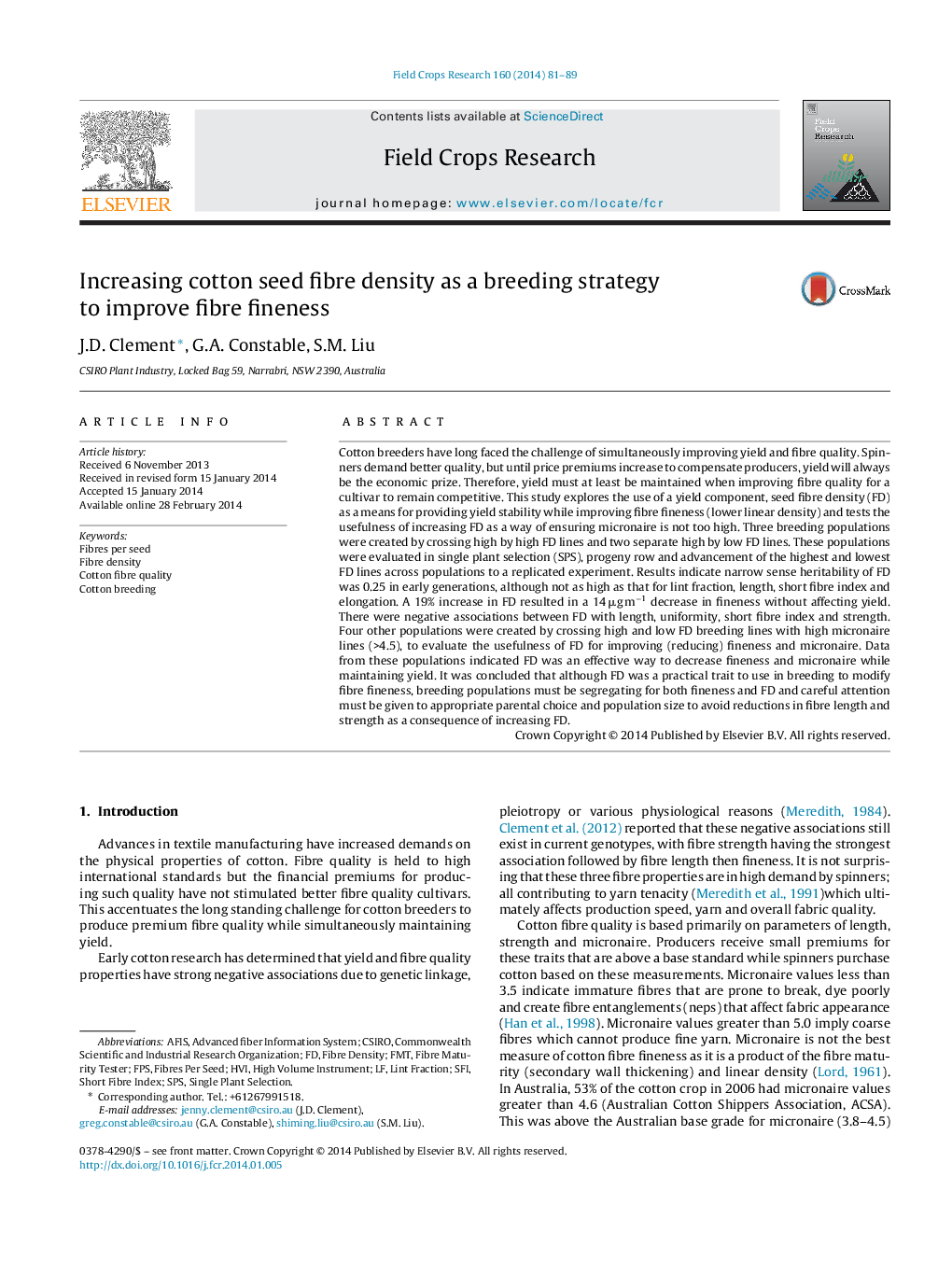| Article ID | Journal | Published Year | Pages | File Type |
|---|---|---|---|---|
| 4510017 | Field Crops Research | 2014 | 9 Pages |
•Genetic diversity exists for seed fibre density (FD).•FD was negatively correlated with fibre strength, length and fineness.•High FD crossed with high micronaire reduced fineness in subsequent progeny.•Utilising high FD was effective in reducing fibre fineness while maintaining yield.
Cotton breeders have long faced the challenge of simultaneously improving yield and fibre quality. Spinners demand better quality, but until price premiums increase to compensate producers, yield will always be the economic prize. Therefore, yield must at least be maintained when improving fibre quality for a cultivar to remain competitive. This study explores the use of a yield component, seed fibre density (FD) as a means for providing yield stability while improving fibre fineness (lower linear density) and tests the usefulness of increasing FD as a way of ensuring micronaire is not too high. Three breeding populations were created by crossing high by high FD lines and two separate high by low FD lines. These populations were evaluated in single plant selection (SPS), progeny row and advancement of the highest and lowest FD lines across populations to a replicated experiment. Results indicate narrow sense heritability of FD was 0.25 in early generations, although not as high as that for lint fraction, length, short fibre index and elongation. A 19% increase in FD resulted in a 14 μg m−1 decrease in fineness without affecting yield. There were negative associations between FD with length, uniformity, short fibre index and strength. Four other populations were created by crossing high and low FD breeding lines with high micronaire lines (>4.5), to evaluate the usefulness of FD for improving (reducing) fineness and micronaire. Data from these populations indicated FD was an effective way to decrease fineness and micronaire while maintaining yield. It was concluded that although FD was a practical trait to use in breeding to modify fibre fineness, breeding populations must be segregating for both fineness and FD and careful attention must be given to appropriate parental choice and population size to avoid reductions in fibre length and strength as a consequence of increasing FD.
